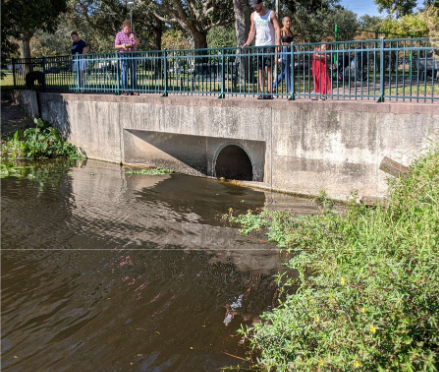New plan picks up where the old one left off

St. Petersburg’s Crescent Lake north weir outfall structure. Courtesy City of St. Petersburg
About a half dozen Florida-based insurance companies and dozens of insurance agencies call the Tampa Bay Area home. That’s why we were intrigued to learn that St Petersburg wants to spend over $1 billion in floodwater management projects and improvements by the year 2050. Its Stormwater Master Plan includes recommendations for new flood modeling technology, expansive data collection, and integrates direct stakeholder feedback – but it’s a little pricey.
Many of the detractors are worried about the scope of the plan, with a huge budget but no funding allocated for seawall assessments or other first lines of defense. “The funding is not going to be there for all these projects for 2050,” said Councilmember Lissette Hanewicz, as quoted in the St Pete Catalyst. “We’re not even talking about seawalls … And there is going to be a cost associated with storm surge at some point, too.” The billion-dollar plan is an overhaul from the committee’s 2023 version that included only 76 projects for a grand total of $760 million – but the projects can only wait so long. The Tampa Bay Area has the largest flood risk in all of Florida in terms of property values and its last major Stormwater Master Plan was back in 1994; even a Category 1 hurricane could be devastating for homeowners, business owners, and the insurance industry at large.
As a secondary effect, spending on flood prevention and storm surge mitigation efforts can help reduce flood insurance rates in the area – and that might even trickle down into property insurers who like to see more hardened infrastructure as it affords greater protection for homes. Brejesh Prayman, the engineering and capital improvements director for the stormwater project, was willing to elaborate further on the other savings accrued. He said the process, even in its infancy, has already saved the city money – a $3 million investment for new modeling technology has already alleviated $15 million from the city through grant awards on a few projects.
The benefits of the technology go even deeper, as laser-guided measuring systems can predict floods with pinpoint accuracy. The ’94 plan only had 1,186 stormwater subbasins to run tests and now the number has skyrocketed to 12,628, allowing analysts to produce even more fine-tuned predictions. The city will have to crack down on nutrient regulations to meet stormwater permitting requirements by December of 2025, something accounted for in the incredibly iterative process. Prayman commented that the city only ever completed a third of the ’94 recommendations, but the new plan will be a living document evolving with new discoveries and data, ensuring the project stays online for years to come.
LMA Newsletter of 8-5-24

